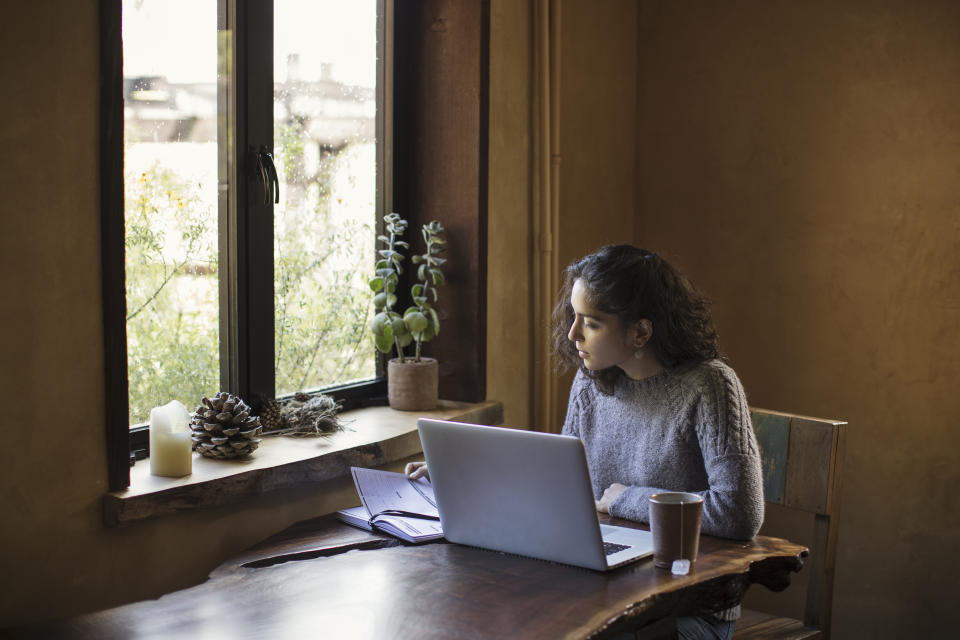Coronavirus: How to avoid cabin fever when working from home

People across the UK have been told to work from home where possible to try and contain the spread of coronavirus. For some people, the idea of self-isolation may seem like a dream come true – you can avoid commuting, work in the comfort of your home and if you like, spend the day in your pyjamas.
For others, however, working from home can be a challenge. Being cut off from the outside world can be difficult for people who love socialising, even if it’s just a quick chat over a coffee in the office kitchen. And remote working can be even harder for those with small children, too.
Many of us will have experienced cabin fever at some point, perhaps if stuck inside for a long period due to the weather or an illness. In 1984, researchers in Minnesota found that although “cabin fever” means slightly different things to different people, it is often characterised by anxiety, irritability, boredom and restlessness. Essentially, being taken out of your daily routine, cooped up in your house and restricted in your choices and activities is stressful.
Keep in contact with other people
One of the trickiest aspects of self-isolation or working remotely is managing loneliness, which is already a growing problem among workers. Loneliness is bad for our minds and our physical health, increasing our risk of high blood pressure, obesity and mental health problems such as anxiety or depression.
According to a survey of 2,000 professionals by CV Library, more than half (53%) said they suffer from loneliness in the workplace. Two-thirds of those aged 35 to 44 feel lonely at work, making them the most isolated age group. A further 47.4% of 45- to 54-year-olds said they felt lonely at work too.
You may not be able to head to the pub after work as usual or go out for dinner with friends, but socialising is still important. A quick phone call to a friend or colleague can benefit both of you, even if it’s for a brief catch-up.
Make sure your day is structured
A change in your working environment can be difficult, particularly if you are used to getting up at 7am, commuting to your office and switching off when you get home. Suddenly, you may not have to wake as early and your personal space becomes your office.
Read more: How to make a good impression if you work from home
It’s tempting to wake up when you feel like it, but sticking to a routine and a structure is key to successfully working from home. Try to get up at the same time every day, give yourself a lunch break and coffee breaks and finish work at a reasonable time. Set yourself a list of work to complete, or schedule what you’ll do and when over the course of the day. Setting yourself up in a home office - which may just be a small desk in your living room or at the kitchen table – is crucial. You know where you work best, but when you’re working at a proper desk, you’re more likely to be in the mindset to focus and concentrate.
Try a change of scenery
If you are working from home, switching up your workplace every so often can help prevent cabin fever from setting in too quickly. According to the Minnesota study, many coping solutions involved a change in physical or mental scenery. “Additionally, having the concept of ‘cabin fever’ may have been useful in itself, providing a way to interpret what was going on and to point to coping strategies,” the researchers wrote.
This might mean working on the balcony or in the garden if you have one, or setting up your home office in another room every other day. Taking regular breaks is important, even if you can’t leave your house.
Obviously, a physical change of scenery is easier said than done for some people under the current circumstances. According to the latest NHS guidelines on self-isolating, anyone with symptoms should stay at home for at least seven days. If you live with other people, they should stay at home for at least 14 days, to avoid spreading the infection outside the home.
Read more: How to tackle work-from-home loneliness
But, if anyone in your home gets symptoms, they should stay at home for seven days from the day their symptoms start, even if it means they're at home for longer than 14 days.
Set yourself small goals
The days can drag if you are stuck at home, particularly when bombarded with bad news every day. Setting small goals can help, whether it’s learning a new skill, doing an online course or reading a new book every week.
It’s also important to keep active when working remotely. Physical activity releases brain chemicals such as endorphins, which help to relieve discomfort and boost our mood. A 2017 study by the Black Dog Institute found regular exercise of any intensity can help prevent depression – and exercising for just a few minutes a day can have a significant impact on your mental health. The gym might be off-limits, but there are plenty of home workout videos on YouTube, from Zumba to Yoga and strength exercises.

 Yahoo Finance
Yahoo Finance 